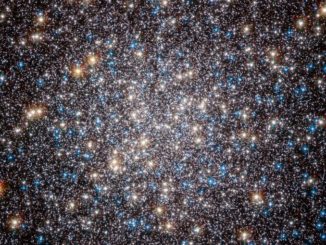
Using ground-based telescopes, all-sky surveys and even the Hubble Space Telescope, astronomers have found a suicidal asteroid that is flying apart thanks to solar heating and subsequent infrared emissions that cause it to spin faster and faster.
Known as 6478 Gault, the asteroid measures four to nine kilometres (2.5 to 5.5 miles) across, and features two comet-like tails of debris being released into space. The asteroid is in a destructive spin caused by a phenomenon known as YORP torque. As the body is warmed by the sun, infrared radiation escapes that carries away heat and momentum.
This small force causes the asteroid to spin up to the point that centrifugal force can eventually overcome gravity. As the body becomes increasingly unstable, landslides can cause rubble and dust to stream off into space, creating one or more tails. Of the 800,000 known asteroids between Mars and Jupiter, YORP “disruptions” occur about once per year.
“This self-destruction event is rare”, said Olivier Hainaut of the European Southern Observatory. “Active and unstable asteroids such as Gault are only now being detected by means of new survey telescopes that scan the entire sky, which means asteroids such as Gault that are misbehaving cannot escape detection any more.”
Gault’s debris tail was first observed by the University of Hawaiʻi/NASA ATLAS (Asteroid Terrestrial-Impact Last Alert System) telescopes on 5 January 2019. Archival data showed the tail actually was observed earlier, in December 2018, and a second, shorter tail had been seen by various telescopes shortly thereafter.
A detailed analysis suggested that the two events that generated the debris tails occurred around 28 October and 30 December 2018. Follow-up observations indicated a two-hour rotation period for Gault, right at the threshold required for material to begin tumbling and sliding across the surface.
“Gault is the best ‘smoking-gun’ example of a fast rotator right at the two-hour limit,” said Jan Kleyna of the University of Hawaiʻi. “It could have been on the brink of instability for 10 million years. Even a tiny disturbance, like a small impact from a pebble, might have triggered the recent outbursts.”
The tails are expected to be visible for a few months before the dust in them is fully dispersed.



